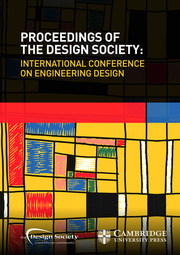No CrossRef data available.
Article contents
Using Personas in the Design Process. Towards the Development of Green Product Personality for In-Car User Interfaces
Published online by Cambridge University Press: 26 July 2019
Abstract
The desire to combine advanced user-friendly interfaces with a product personality communicating environmental friendliness to customers poses new challenges for car interior designers, as little research has been carried out in this field to date. In this paper, the creation of three personas aimed at defining key German car users with pro-environmental behaviour is presented. After collecting ethnographic data of potential drivers through literature review, information about generation and Euro car segment led to the definition of three key user groups. The resulting personas were applied to determine the most important interaction points in car interior. Finally, present design cues of eco-friendly product personality developed in the field of automotive design were explored. Our work presents three strategic directions for the design development of future in-car user interfaces named as a) foster multimodal mobility; b) emphasize the interlinkage economy - sustainable driving; and c) highlight new technological developments. The presented results are meant as an impulse for developers to fit the needs of green customers and drivers when designing user-friendly HMI components.
- Type
- Article
- Information
- Proceedings of the Design Society: International Conference on Engineering Design , Volume 1 , Issue 1 , July 2019 , pp. 2911 - 2920
- Creative Commons
- This is an Open Access article, distributed under the terms of the Creative Commons Attribution-NonCommercial-NoDerivatives licence (http://creativecommons.org/licenses/by-nc-nd/4.0/), which permits non-commercial re-use, distribution, and reproduction in any medium, provided the original work is unaltered and is properly cited. The written permission of Cambridge University Press must be obtained for commercial re-use or in order to create a derivative work.
- Copyright
- © The Author(s) 2019


